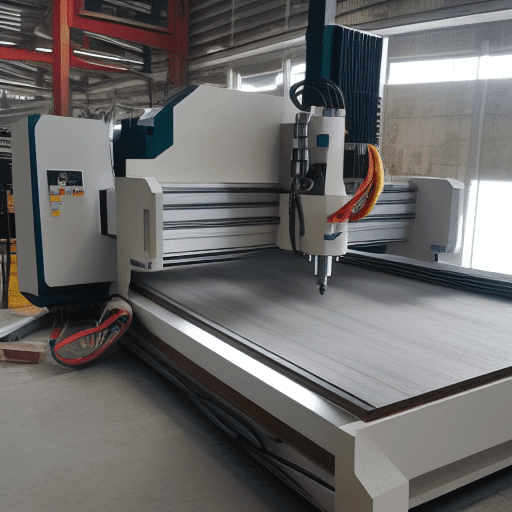In the realm of manufacturing and metalworking, various machining processes contribute to the creation of intricate and accurate components. One such process that stands out for its precision and versatility is grinding. Grinding machining, also known as abrasive machining, involves the use of an abrasive tool to remove material from a workpiece, resulting in a finely finished surface. In this blog, we will delve into the world of grinding machining, exploring its principles, applications, advantages, and the various types of grinding techniques employed in the industry.
Understanding Grinding Machining
Grinding machining is a subtractive process in which material is removed from a workpiece by the action of an abrasive material against its surface. The abrasive material, usually in the form of grains, is bonded together to create a grinding wheel or an abrasive belt. The workpiece is secured in place, and the grinding wheel is rotated or moved across the workpiece, generating a cutting action. This process is primarily utilized to achieve precise dimensions, improve surface finish, and enhance the overall geometric accuracy of the workpiece.
Applications of Grinding Machining
Grinding machining finds extensive applications across various industries, owing to its ability to produce high-quality, close-tolerance components. Some key areas where grinding machining is commonly employed include:
a) Automotive Industry: Grinding machining is crucial in the automotive sector for precision grinding of engine components, gears, shafts, and camshafts, among others.
b) Aerospace Industry: The aerospace industry relies on grinding machining for manufacturing turbine blades, engine parts, landing gear components, and other critical aerospace components.
c) Tool and Die Making: Grinding machining plays a vital role in tool and die making, enabling the production of intricate molds, cutting tools, and dies with exceptional precision.
d) Medical and Dental: Grinding machining is utilized in the production of medical implants, prosthetics, surgical instruments, and dental tools, ensuring precise dimensions and superior surface finishes.
e) Precision Engineering: In precision engineering, grinding machining is utilized to manufacture bearings, valves, seals, and other components requiring tight tolerances and excellent surface quality.
Advantages of Grinding Machining
The grinding machining process offers several advantages, making it a preferred choice in many manufacturing settings:
a) High Precision: Grinding machining allows for exceptional precision and accuracy, with the capability to achieve tight tolerances as low as a few micrometers.
b) Surface Finish: The process produces superior surface finishes, often achieving surface roughness values of Ra 0.2 micrometers or even smoother.
c) Material Versatility: Grinding machining can be applied to a wide range of materials, including metals, ceramics, composites, and even some polymers.
d) Dimensional Stability: Grinding helps to maintain the dimensional stability of the workpiece, minimizing distortion and ensuring consistent part dimensions.
e) Tooling Variety: Grinding can be performed using various types of grinding wheels and tools, allowing for adaptability and versatility in different applications.
Types of Grinding Techniques
The grinding machining process encompasses several techniques, each tailored for specific applications. Here are some prominent grinding techniques:
a) Surface Grinding: This technique involves grinding the outer surfaces of a workpiece, creating a flat or contoured surface.
b) Cylindrical Grinding: In cylindrical grinding, the grinding wheel rotates around the workpiece’s axis to achieve precise cylindrical shapes or contours.
c) Centerless Grinding: Centerless grinding is utilized for high-volume production of cylindrical components, where the workpiece is supported by a blade and ground between the grinding wheel and a regulating wheel.
d) Internal Grinding: Internal grinding focuses on grinding the internal surfaces of a workpiece, such as bores or holes, to achieve precise dimensions and surface finishes.
e) Thread Grinding: Thread grinding is used to produce accurate and precise threads on fasteners, screws, and threaded components.
Safety Considerations
It is vital to prioritize safety when conducting grinding machining operations. Operators must adhere to proper safety protocols, including the use of personal protective equipment (PPE), maintaining a clean and organized workspace, and ensuring the grinding machine and tools are well-maintained. Additionally, proper training and knowledge of grinding techniques are essential to prevent accidents and ensure a safe working environment.
Conclusion
Grinding machining stands as a remarkable process in the world of precision manufacturing, offering exceptional accuracy, surface finish, and dimensional stability. Its versatile nature and wide-ranging applications make it an indispensable technique in industries such as automotive, aerospace, and precision engineering. As technology continues to advance, grinding machining processes are expected to become even more efficient and capable, further expanding the possibilities for creating intricate and high-quality components in the years to come.
